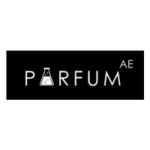Please wait...
About This Project
A Foobler is a toy that dispenses food when your pet plays with it. We want to build one for the San Francisco Zoo's rhinos.
Animals need to engage with the environment to maximize their psychological well-being. One of the easiest ways to accomplish this in zoos is to make animals 'work' for their food. We want to build a novel feeding system to engage our rhinos in more active foraging, and assess their behavioral responses.
More Lab Notes From This Project

Browse Other Projects on Experiment
Related Projects
Do primate mothers grieve?
Do primates understand death? Can they grieve? When a primate baby dies, often the mother will carry its...
Does increasing enrichment complexity for bears encourage them to work harder for their food?
Food abundance, delivery schedules, and other external factors affect animal behavior in zoos, especially...
Cat and Human Personality Interaction Project
Millions of cats that enter US animal shelters every year are euthanized. Currently, there is little scientific...





